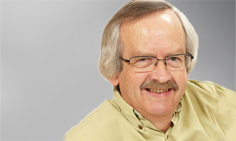THE first Indigenous person elected to the WA Parliament and the first to serve as a state government minister in Australia, the late Ernie Bridge, established the Unity of First People of Australia after retiring from politics.
One of the many objectives of Unity has been to conduct health assessments at the request of remote Indigenous communities in the Kimberley. While taking part in one of these screenings, a community member told Mr Bridge that her children’s limited prospects were like a “dark cloud” hanging over their future.
This fear is consistent with many concerns expressed in the recently released Elders’ Report into Preventing Indigenous Self-harm & Youth Suicide. In the report, Professor Pat Dudgeon, one of Australia’s first Indigenous psychologists, referred to the seeds of the dark cloud’s formation — “the brutal history of colonization, the inter-generational trauma left by Stolen Generations policy, and ongoing racism, … unemployment, poverty, overcrowding, social marginalisation, and higher access to alcohol and drugs” describing how “with muted voice, the pain and hurt being experienced by our young is being turned upon themselves”.
This inherited pain is now recognised to have cross-generational impact through epigenetic mechanisms. Its impact on the whole community has been described as anomic depression — defined as “an affective, psychophysiologic and behavioural syndrome developing in reaction to alienation from aboriginal culture under Westernizing influence”.
Aggravating the scenario is the mainstream media’s misrepresentation of Indigenous Australians, with social media providing an additional weapon to bully children.
In view of the ongoing impact of the gap in Indigenous health, there is a need to do more than apologise for the stolen generations. An attempt was made to pass a Stolen Generations Reparations Tribunal Bill 2010 without success, but in the Northern Territory three stolen generation organisations have signed a memorandum of understanding to jointly advocate for compensation and a reparation package.
Visiting memorials and attending commemorative events can help those with post-traumatic stress as indicated by a study of Vietnam veterans. Although there is a plaque at Coniston Station in the NT to commemorate the last massacre of over 30 Indigenous people in 1928, there are few places to acknowledge and pay respect to those who lost their lives in the war between white colonists and the original and successful stewards of Australia. The prevailing and unhelpful policy seems to be “best we forget” — which is unwise when “there can be no reconciliation without acknowledging the wars fought on our own soil”.
Despite their tortuous history, many Indigenous people have survived and thrived with an increasing number becoming successful politicians, professionals, artists and entrepreneurs. There are also successful Indigenous community-led initiatives.
One positive approach is to audit a community’s assets, capacity and strengths in order to inform a vision for future community development, as has been done in Condobolin, NSW. There are also examples of success overseas such as the Alaskan multi-award winning “Nuka System of Care” designed by Indigenous people to achieve physical, mental, emotional and spiritual wellness, which led to a decreased need for emergency care due to increased availability of primary care services. A similar approach advocated for primary health care services in Australia highlighted institutional barriers.
Critical to ensuring a community’s health is to create the conditions for people to take control of their lives. These conditions, specified by Professor Sir Michael Marmot, are early child development; education and skills development; employment and working conditions; minimum income for healthy living; sustainable communities; and a social-determinants approach to prevention.
The Prime Minister has in his in-tray the recommendations of the Senate inquiry, finalised in March 2013, into Australia’s response to the WHO’s Commission on Social Determinants of Health report: “Closing the gap within a generation”. He is in a prime position to drive these recommendations forward. This provides a unique opportunity to adopt a multifaceted approach to cover all aspects of the lives of Indigenous people and is consistent with the silo-slashing “Health in all policies” approach.
The influential British epidemiologist, the late Geoffrey Rose said: “Much can be done by individuals themselves to improve their own health prospects, but whether or not they will actually take such action depends substantially on economic and social structures for which governments are responsible.”
The lives and health of Indigenous Australians are in your hands, Prime Minister. You can part the “dark cloud”. You can inspire Indigenous children and young people to believe that life is always worth living — wherever they reside in Australia.
Dr Bret Hart is a public health physician practising in WA with the Unity of First People of Australia Health Programs.

 more_vert
more_vert
I am surprised to see Coniston, the site of the 1928 massacre, being recorded by Bret Hart as being in NSW, when the event occured in the Northern Territory. Am I mistaken?
EDITOR: That is correct. The massacre was at Coniston Station in the Northern Territory. The article has been corrected. MJA InSight apologises for the error.